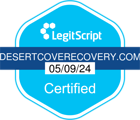
Instead of incorporating heroin education in catchy slogans, or scare tactics, many people are educating students simply by talking to them and sharing open, honest and real information. This straight-talk version of drug education may be seeing better results than any other campaign. For instances, some high schools have implemented clubs that are centered around drug abstinence and positive peer influence.
Clubs that focus on staying healthy and revolve around education and engaging in activities that are drug-free are not a new concept. In fact, some form of these clubs have been around for decades. Some of the more recent activity has been focused on the heroin problem and the decisions that many teens have to face regarding it and other drugs.
“All of our students have a story of somebody in their family who is an addict or a friend of a family member or something of that nature,” explained Erin Parsons, a history teacher and co-founder of the Marshall Country Drug Free Club.
Perhaps one of the most influential aspects to drug-free clubs is the power of peer influence. Heroin experimentation is arguably a peer-driven activity, and clubs like the one in Marshall County are looking to use that same phenomenon for positivity. The more agreement that can take place among young people to stay away from heroin, painkillers and other drugs, the more they can have an impact on the behaviors of their peers and avoid the pitfalls of millions of young adults who wind up needing treatment for their substance abuse.


